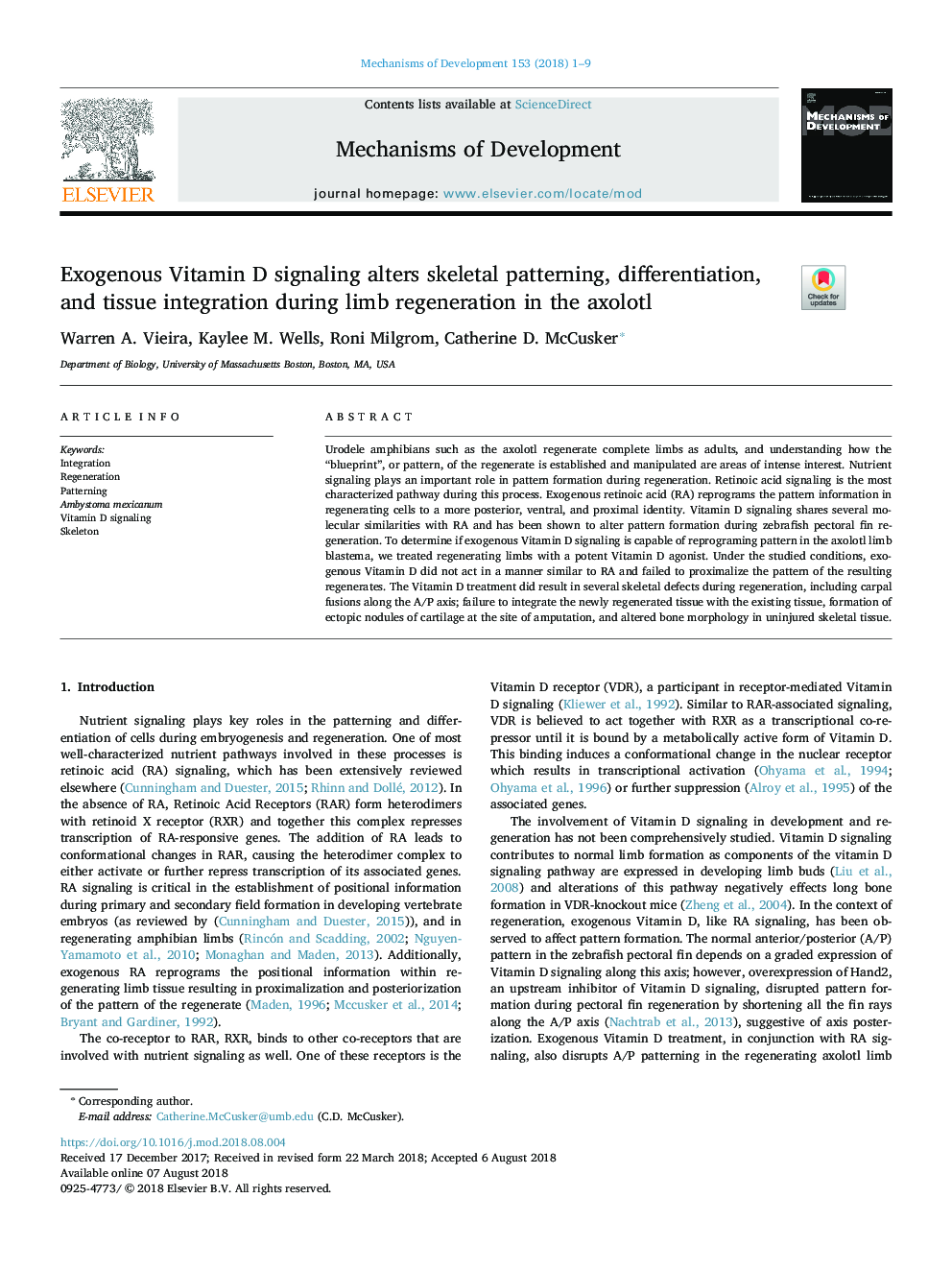| Article ID | Journal | Published Year | Pages | File Type |
|---|---|---|---|---|
| 8475814 | Mechanisms of Development | 2018 | 9 Pages |
Abstract
Urodele amphibians such as the axolotl regenerate complete limbs as adults, and understanding how the “blueprint”, or pattern, of the regenerate is established and manipulated are areas of intense interest. Nutrient signaling plays an important role in pattern formation during regeneration. Retinoic acid signaling is the most characterized pathway during this process. Exogenous retinoic acid (RA) reprograms the pattern information in regenerating cells to a more posterior, ventral, and proximal identity. Vitamin D signaling shares several molecular similarities with RA and has been shown to alter pattern formation during zebrafish pectoral fin regeneration. To determine if exogenous Vitamin D signaling is capable of reprograming pattern in the axolotl limb blastema, we treated regenerating limbs with a potent Vitamin D agonist. Under the studied conditions, exogenous Vitamin D did not act in a manner similar to RA and failed to proximalize the pattern of the resulting regenerates. The Vitamin D treatment did result in several skeletal defects during regeneration, including carpal fusions along the A/P axis; failure to integrate the newly regenerated tissue with the existing tissue, formation of ectopic nodules of cartilage at the site of amputation, and altered bone morphology in uninjured skeletal tissue.
Related Topics
Life Sciences
Biochemistry, Genetics and Molecular Biology
Cell Biology
Authors
Warren A. Vieira, Kaylee M. Wells, Roni Milgrom, Catherine D. McCusker,
